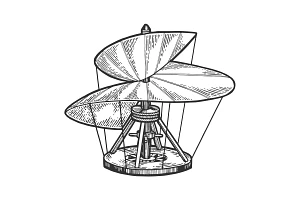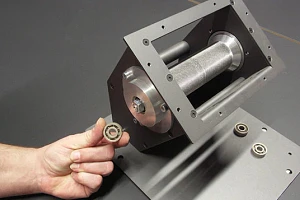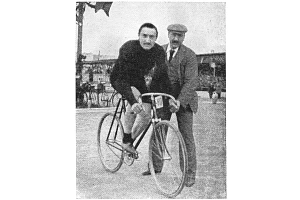Change Language :
Rolling bearings: 4 facts that will surprise you
What do a famous painter, children's toys and a road race have in common with bicycles? This may come as a surprise to some, but they are in some way related to rolling bearings. When thinking about rolling bearings, many people know that they are mainly used in industry, such as in factories or motor vehicles. Rolling bearings are essential components in many of these applications. However, you may be surprised by the four interesting facts about rolling bearings that await you below.
1.
The inventor of the rolling bearing
The man behind the invention of the roller bearing was not only a famous artist, philosopher and mathematician, but also an inventor. He became famous for his painting "The Mona Lisa". You may have already guessed it. The inventor of the rolling bearing was none other than Leonardo Da Vinci. He discovered the ball bearing in the years 1498-1500 to reduce the friction between two plates that would touch in his famous design of the propeller, a sketched flying machine.
Although the design of the helicopter went down like a lead balloon, the rolling bearing had a more successful history. 100 years after Da Vinci's design, Galileo Galilei also mentioned an early form of rolling bearing. It was not until 1792 that a patent for the "modern" rolling bearing was registered – it was granted to the Englishman Philip Vaughan in 1791.
The first known discovery of a ball bearing device was found in the Roman Empire around 40 AD. It was a simple revolving table with balls underneath, presumably to allow people eating at the table to easily turn the table to reach other food.

2.
Rolling bearings in everyday life
Although it is often overlooked in everyday life, rolling bearings are practically everywhere. Essentially, bearings are critical to create a smooth flow of motion, and almost everything that has moving parts requires some type of bearing.
Bearings in toys
All toys with wheels, whose components roll or rotate, have rolling bearings as part of their design, such as the well-known fidget spinners, skateboards, roller blades, remote control cars, etc. The bearings in these toys enable fast, efficient functionality and safety.
Bearings in household appliances
How does the spin cycle in the washing machine or the rotation of the plate in the microwave come about? That's right. Rolling bearings are also involved here. Both application examples require the rolling bearing for proper operation. The door of your refrigerator and the garage door are equipped with bearings, allowing them to be easily opened and closed on their hinges. Other examples are blenders, fans, air conditioners, whirlpools...

3.
The largest rolling bearing in the world
In 2017, it was reported that Huisman, the global specialist in lifting, drilling and underwater solutions, was currently producing the world's largest rolling bearings at its production facility in China. These two bearings with a diameter of 30 metres are intended for the TMC cranes designed by Huisman. These have a lifting capacity of 10,000 tonnes and a radius of around 48 metres.
In contrast to traditional TMC cranes, which use either bogies or large wheels for their slewing system, the cranes developed by Huisman use large ball bearings of their own design. The advantage of this type of bearing is that it enables the crane to be considerably lighter.
4.
Rolling bearings win the first bicycle road race
In August 1869, a Parisian bicycle mechanic named Jules Suriray patented the use of a radial ball bearing he had developed for bicycles. Just over three months after Suriray received his patent, the rolling bearing he had developed was put to a rigorous and well-publicised test during the world's first major city-to-city bicycle road race. This inaugural race covered some 80 miles between Paris and Rouen, and one of the competitors – an Englishman named James Moore – rode a bicycle with this type of rolling bearing installed on the oversized front wheel.
Moore won the race, and his first place medal was undoubtedly due to the new rolling bearing that had been fitted to his bike. As you have read, the rolling bearing established itself early on and has become an integral part of our everyday lives.
We at igus specialise in the production of xiros rolling bearings made of plastic. These do not require external lubrication, operate extremely quietly, are corrosion-free and impress with their smooth running. This makes them a cost-effective alternative to conventional metal rolling bearings.

Consulting
I look forward to answering your questions
igus® GmbH+49 2203 9649-0Write e-mail
Shipping and consultation
In person:
Monday to Friday from 7 am - 17 pm.
Saturdays from 8 am- 12 pm.
Online:
24h
WhatsApp-Service:
Montag – Freitag: 8 – 16 Uhr